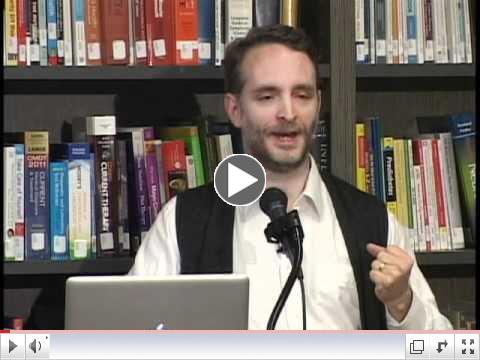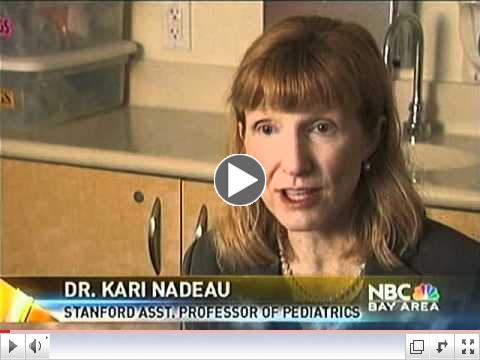ITI Management
| |
The ITI Campaign Council Members:
-
Tracey Avery
-
Marie Barry
-
Alicia Kao, MD
-
Leslie Denend, PhD
-
Matthew Frank
-
Marcia Goldman
-
Kristin Loomis
-
Robert Moore
-
Harry Saal, PhD, Chair
-
Sue Siegel
The ITI Editorial Team:
-
Marie Barry, Campaign Council Member
-
June Lang, Senior Director of Development, ITI and Programs
-
Michele King, ITI Program Manager
|
 | | Patient Marie Barry and ITI Campaign Council Member speaks about her diagnosis of three autoimmune disorders. |
|
| |
BECOME AN ORGAN DONOR
Many lives are lost each
year because of a chronic shortage of organ donors. The only way to be sure that your desire to be an organ donor is recognized in time to help save a life is to register with the
California Donor Registry
|
| Join Our List |
 |
|
|
Pediatric Immunologist Dr. Sean McGhee Discusses Allergies, Symptoms and Treatments
 | | Pediatric Immunologist Dr. Sean McGhee Discusses Allergies, Symptoms and Treatments |
|
New Stanford immune-system sensor may speed up, slash cost of detecting disease
by Erin Digitale An inexpensive new medical sensor has the potential to simplify the diagnosis of diseases ranging from life-threatening immune deficiencies to the common cold, according to Manish Butte, MD, PhD who lead the team of inventors at the Stanford University School of Medicine. Their device, called an integrated microfluidics-waveguide sensor, sorts and counts cells in small samples of blood and other body fluids. The developers say the sensor provides an easy way to measure different types of white blood cells, a key component of the immune system. They add that the sensor, which is about the size of an adult's thumbnail, could be deployed in doctors' offices, newborn nurseries, patients' homes, disaster sites and battlefields. [full story]
|
|
| Famous People Affected by Autoimmune Disease
Autoimmunity doesn't just strike us normal average folks... it strikes extraordinary individuals too - and even cartoon characters!
FAMOUS AUTOIMMUNIES- Alexander Graham Bell (inventor) - Pernicious anemia
- Alfred the Great (Leader, United Kingdom) - Crohn's disease
- Ann Rice (author) - Type 1 Diabetes
- Art Garfunkel (musician) - Psoriasis
- Queen Anne (British House of Stuart) - Lupus, APS
- Barbara Bush (First Lady of the US) - Lupus, Graves' Disease
- Benjamin Franklin - Psoriasis
- Bernie Mac (actor/comedian) - Sarcoidosis
- Bill Bradbury (Secretary of State, Oregon) - MS
- Bill Russell (basketballl egend) - Sarcoidosis
- Pierre Auguste Renoir (painter/artist) - Rheumatoid Arthritis
- Pietra Thornton - (model) Lupus
- Princess Caroline of Monaco - Alopecia
- Rachelle Breslow (author) - MS
- Teri Garr (actress) - MS
- Terry Black (musician/singer) - MS
- Queen Victoria - Endometriosis
- Vladamir Kramnik (chess player) - Ankylosing spondylitis
- Vladimir Nabokov (author) - Psoriasis
[click here for full list of Autoimmunies]
|
| |
| |
ITI NEWS AND UPCOMING PUBLIC EVENTS
May 2: ITI Working Group on Infectious Diseases: Dr. CatherineBlish,Beckman,B200,3pm
May 18: ITI Seed Grant and Young Investigator Awards Presentations, 9am-5pm, LK130
Questions? contact Michele King at 650 723-3084 or mking@stanford.edu
|
|
|

Dear Friends:
Welcome to the Spring 2012 issue of the ITI Newsletter. We are proud to present science and stories that are at the forefront, and very important to human health.
Featured in this issue are the latest research in allergy medicine and how the Institute of Immunity, Transplantation and Infection is changing the lives of people plagued with common allergies. Also featured is the testimony of one of our campaign council members who lives with not one but three autoimmune diseases.
We would like to hear from you with comments or questions on any of our stories. Enjoy!
Mark Davis and Carlos Esquivel
Institute for Immunity, Transplantation and Infection (ITI)
|
| ARTICLE HEADLINE |
|
 | Dr. Kari Nadeau
|
We asked Drs. Kari Nadeau and Manish Butte, both in Pediatrics - Immunology, to tell us about their recent discoveries in allergy and autoimmune diseases.
Why, in your view, has the incidence of pediatric allergies risen so dramatically in the last twenty years? Kari Nadeau: It is most likely a combination of environmental exposures in individuals predisposed genetically to have allergies. For example, if one parent has any type of allergy (eczema, allergic rhinitis, asthma, drug allergy, or food allergy), their child has a 65% chance of having a type of allergy. If both parents have any type of allergy, their child has an 85% chance of having some type of allergy. We know from twin studies however that genetically predisposed allergic individuals need exposures to allergens (like grass pollens, molds or drugs or foods) to actually get the allergic reaction they are predisposed to get.
In addition, we are seeing that in the next generation of children of allergic parents, the allergies are more severe in nature and the allergy levels in the blood are about 40% higher than in the adults. So it is thought that the environmental exposures are worsening the allergies. We know that certain environment exposures like smoking and air pollution can make allergies and asthma worse, in children and adults. It is also thought that global warming and rising CO2 levels with rising temperatures and increasing the length of pollen seasons and increasing the ability of pollens to be released from plants (like ragweed for example). Altogether, these are some of the main reasons we know of as to why allergies are on the rise. Our immune system is central in this process. We know that they only way to have allergies is to activate a certain part of our immune system that deals with allergic reaction. This arm of the immune system is very dangerous and can lead to death in 6 minutes if someone has an allergic reaction (like to bees or to nuts or to shellfish). At Stanford, we now have developed new diagnostic tests in infants to adults for allergies, we have now been able to create therapies for cures for allergies, and we have discovered ways to modify the immune system to become non allergic permanently. These discoveries at Stanford have all been possible because of studies of the immune system and the work we do in collaboratively with immunologists at Stanford.
|
| ARTICLE HEADLINE |
|
 | | Dr. Manish Butte |
In your view is there an increase in the incidence of autoimmune diseases? If so, what is the cause, what is making these diseases happen?
Manish Butte: Autoimmune diseases including rheumatoid arthritis, Type 1 diabetes, and lupus (there are dozens of such disorders) are on the rise. A number of these diseases were found to occur in multiple members of the same family or in identical twins but not in fraternal twins, suggesting to a previous generation of researchers that the cause could lie in an inheritable mutation in the DNA (the genome). To identify whether these diseases may be caused by one or more mutations in the genome, a number of studies have been performed over the past 10 years to see if these putative mutations are linked to common changes in the DNA. Generally speaking, the results have been disappointing, suggesting that inhertible changes in the genes do not play much of a role. We now know that genomic DNA contains inheritable chemical modifications -- we call the collection of these modifications the "epigenome" -- and these modifications actually control how genes are turned on and off. The important revelation of recent years is the short sighted notion of "nature versus nurture" -- nurture (environmental influences) can alter nature (the epigenome). For example, we now know that environmental impacts like pollution and smoking result in inheritable changes to the epigenome. Indeed, it was recently shown that alterations in the epigenome are inheritable on a genome-wide basis in identical twins, which changes the focus on the inhertance of autoimmune diseases in families from thinking about the genome to thinking about the epigenome. However, recent studies looking at the epigenome in identical twins who do and do not share an autoimmune disease have not shown clear results, possibly due to the fact that epigenomic patterns are different across different cells and at different times. That is to say, these kinds of studies are quite hard to do right! I believe that in the future there will be a large emphasis on looking at the influences of diet and pollution on the epigenome of immune cells, and in trying to understand how these influences may explain the rise in autoimmunity.
|
| ARTICLE HEADLINE |
|
| |
 | On NBC 11, Pediatric Allergy Expert at Packard Children's Discusses Studies and allergy trials being held at Packard and Stanford, including ones for peanut allergies. Also, families discuss the work of Dr. Nadeau and her team.
|
|
|
 | |
Dr. Kari Nadeau
|
Study: Drug plus dairy treats dangerous milk allergy
As the most common food allergy, milk allergy affects millions, including 2.5 percent of children under age 3. While some kids outgrow it, others' life-threatening response to dairy products never subsides.
Nine-year-old Ludovica La Rosa was born into an Italian family but until recently was never able to indulge in favorites like lasagna or pizza because of a life-threatening dairy allergy. Her allergy was so severe that the tiniest trace of milk, found in a piece of cured ham, once sent her into shock.
"Her lips were swelling like crazy," Ludovica's father, Gregorio La Rosa, recalled of the family's trip to the emergency room. "The same thing happened to the mucous membrane in her throat. It was really, really scary."
Last year, Ludovica took part in a clinical trial at Stanford University School of Medicine to test a potential cure for milk allergies. The Stanford scientists, along with colleagues at Children's Hospital Boston, recently reported success in effectively treating the condition. Most of the children who took part in the small study, including Ludovica, are no longer allergic to milk. [Full story]
|
|
|
All articles in this newsletter are reprinted with the permission of the Stanford Medical School's Office of Communication and Public Affairs. |
|
|







